Welcome to the exciting world of animals named monkeys! Today, we’ll explore a unique group of monkeys known as “The Ugliest Monkeys in the World.” These monkeys might not win beauty contests but have a unique charm.
These animals, named monkeys, aren’t famous for their bright fur or fancy tails. Instead, they’re known for their unusual appearances and unique features. But don’t be fooled by their appearance; these creatures are fascinating and have excellent survival methods.
On this adventure, we’ll learn all about these intriguing animals named monkeys – where they live, what they eat, and why they look the way they do. So, get ready to dive into the world of the “Ugliest Monkeys in the World” and discover the hidden beauty in nature’s diversity.
1. Proboscis Monkey

| Scientific Name | Nasalis larvatus |
| Length | Around 2 feet (males are larger) |
| Weight | Typically between 15 to 24 pounds |
| Identifying Features | Prominent long nose, reddish-brown fur, potbelly |
| Where Found | Borneo, Southeast Asia |
| Conservation Status | Endangered due to habitat loss |
Proboscis Monkey! Some folks might call them “ugly,” but they’re special in their way. These monkeys live in Southeast Asia’s lush rainforests and mangrove swamps, particularly in Malaysia and Indonesia.
Their most noticeable feature is their large, droopy noses, which might seem funny to some. But those noses help them make loud calls and keep cool in the hot weather.
Proboscis Monkeys have a long history, evolving over millions of years. Sadly, their numbers are declining due to habitat loss, making them an endangered species.
These monkeys can only be found in specific parts of the world, making them unique. So, while some may find them “ugly,” they’re a vital part of our planet’s biodiversity!
2. Bald Uakari

| Scientific Name | Cacajao calvus |
| Length | About 45-50 cm |
| Weight | Around 2-4 kg |
| Identifying Features | Bright red face, no facial fur, short tail. |
| Where Found | Amazon rainforest in South America. |
| Conservation Status | Vulnerable due to habitat loss and hunting. |
The Bald Uakari is a unique and unusual monkey found in the Amazon rainforest. What makes it stand out is its distinct appearance, which some might call “ugly.” It has bright red, bald faces that make them look like they’re always blushing!
These monkeys live in the dense Amazon rainforest, swinging through the treetops and enjoying fruits as their favourite meal. Their history is ancient, dating back millions of years, and they have adapted to their environment over time.
Bald Uakaris belong to a particular species known as Cacajao, and they are mainly found in Brazil, Peru, and Colombia. So, when you think about the unique wildlife in the Amazon, remember the bald uakari and its fascinating features!
3. Chacma Baboon
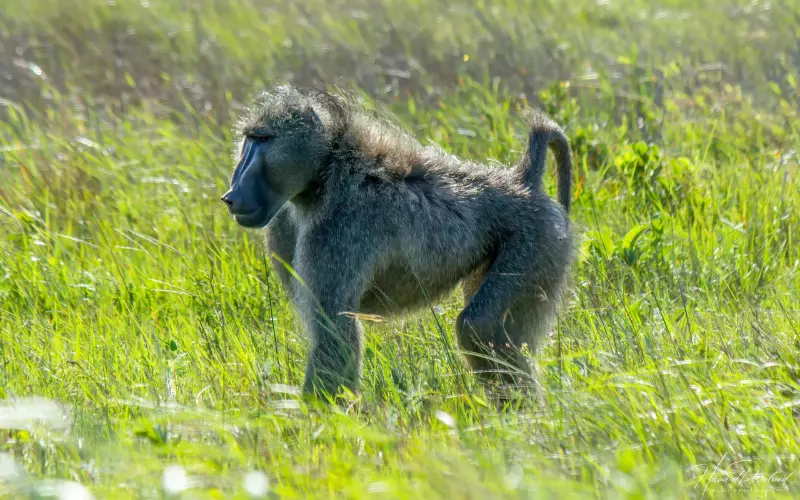
| Scientific Name | Papio ursinus |
| Length | 50-115 cm |
| Weight | 15-40 kg |
| Identifying Features | Hairless face, long limbs, short tail |
| Where Found | Southern Africa |
| Conservation Status | Least Concern |
The Chacma Baboon, found in Africa, is known for its distinctive appearance. Its long face with a big nose and sharp teeth makes it seem’ ugly’ to some. These features help them eat tough plants and find food in the wild.
Chacma Baboons live in various habitats like mountains, forests, and urban areas. They are clever and can adapt to different places. These baboons have been part of Africa’s history for a long time. People have stories about them in their cultures.
Chacma Baboons belong to a species of baboons known as Papio Ursinus. You can find them in different parts of southern Africa, like South Africa and Botswana. These remarkable baboons, with their unique looks and ability to adapt, are essential to Africa’s natural world.
4. Red-faced Spider Monkey

| Scientific Name | Ateles paniscus |
| Length | Up to 24″ (body) + 32″ (tail) |
| Weight | Around 15-20 lbs |
| Features | Long limbs, prehensile tail, red or pink face |
| Found | Amazon rainforests in South America |
| Conservation | Endangered due to habitat loss and hunting |
The Red-faced Spider Monkey is a fascinating creature found in the rainforests of South and Central America, although it’s not known to be one of the ugliest monkeys.
The Red-faced Spider Monkey has a unique appearance with a bright red face and long, skinny arms and legs. Some people might find their looks strange, but in nature, they are adapted to swing gracefully from tree to tree.
These monkeys call dense rainforests their home, where they munch on fruits and leaves. Sadly, habitat destruction due to deforestation threatens their survival.
Historically, these monkeys were less known, but now we recognize their importance in maintaining a healthy forest ecosystem. There are various species of spider monkeys, with their geographic range stretching from Mexico to Brazil. It’s crucial to protect these unique creatures and their homes.
5. Tarsier
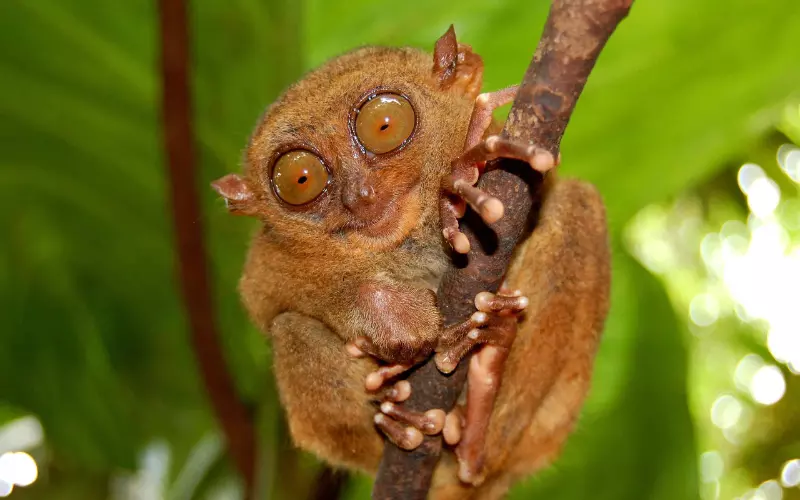
| Scientific Name | Tarsius |
| Length | Around 3.5 to 6 inches (9 to 15 cm) |
| Weight | Approximately 2 to 4 ounces (57 to 113 grams) |
| Identifying Features | Large eyes, long fingers, and a unique ability to rotate its head almost 180 degrees. |
| Where Found | Tarsiers in Southeast Asia, including the Philippines, Borneo, and Sumatra. |
| Conservation Status | Depending on the specific species, tarsiers are listed as vulnerable or endangered due to habitat loss and the pet trade. |
The Tarsier is a unique and fascinating creature. Some people might find it a bit unusual-looking because of its big eyes and tiny body, which some may say make it look “ugly.” But these big eyes help it see well in the dark!
Tarsiers live in forests, mainly in Southeast Asia, like the Philippines. They like to be up high in the trees and are great jumpers!
These small primates have been around long, even before humans! There are different species of Tarsiers, each with its special features.
If you want to see a Tarsier, travel to places like Indonesia, Malaysia, or the Philippines. Remember, beauty is in the eye of the beholder, and Tarsiers are a part of our diverse natural world!
6. Aye-Aye

| Scientific Name | Daubentonia madagascariensis |
| Length | About 14 to 17 inches (36 to 44 cm) |
| Weight | Around 2.2 to 2.6 pounds (1 to 1.2 kg) |
| Identifying Features | Long, bony middle finger for tapping and insect extraction; large, round eyes; bushy tail. |
| Where Found | Madagascar is an island nation in the Indian Ocean. |
| Conservation Status | Madagascar is an island nation in the Indian Ocean. |
The mysterious Aye-Aye! It’s considered unusual looking because of its long, bony finger, which it uses to tap on trees and find tasty insects to eat. This unique primate lives in Madagascar, an island off the coast of Africa. Aye-Ayes have a long history, but locals once misunderstood and feared them. Now, they are protected, and scientists study them to learn more.
There’s only one Aye-Aye species, making them extra special. You’ll find them in the dense forests of Madagascar, where they hide during the day and come out at night to search for food. These incredible creatures are vital to Madagascar’s rich biodiversity and worth protecting.
7. Mandrill
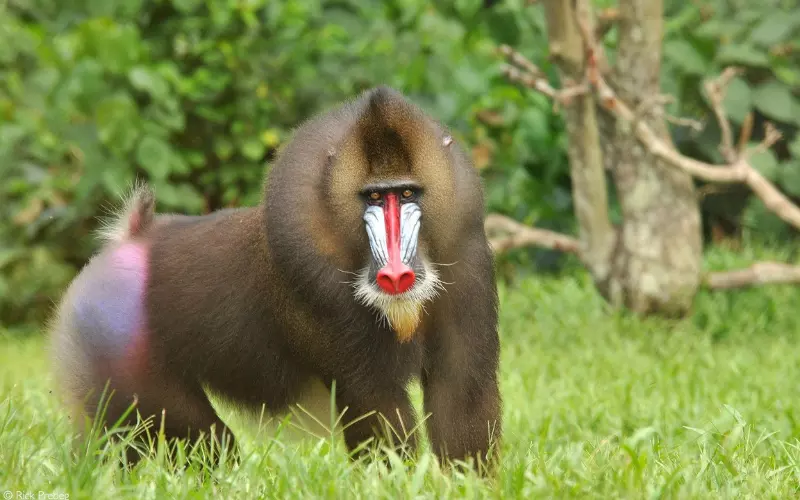
| Scientific Name | Mandrillus sphinx |
| Length | Up to 3.3 feet (1 meter) |
| Weight | 66 to 77 pounds (30 to 35 kilograms) |
| Identifying Features | Colorful face with distinct red, blue, and yellow markings, long canine teeth, and a short tail. |
| Where Found | Central and West Africa, including Cameroon, Gabon, and Congo. |
| Conservation Status | Vulnerable due to habitat loss and hunting for bushmeat. |
The Mandrill is a unique monkey that might be called “ugly” because of its distinct appearance. They have bright blue and red faces with colourful rumps, which can seem unusual to some. Mandrills live in the dense forests and rainforests of Central Africa.
These clever creatures have a long history in African culture and are often featured in stories and art. Mandrills belong to the baboon family and are the world’s largest monkey species. They use their colourful faces to communicate with each other.
You can find them in Cameroon, Gabon, and Congo, where they swing through the trees and forage for fruits, leaves, and insects. So, even though mandrills might seem “ugly” to some, they are vital parts of the African jungle.
8. Lion-Tailed Macaque
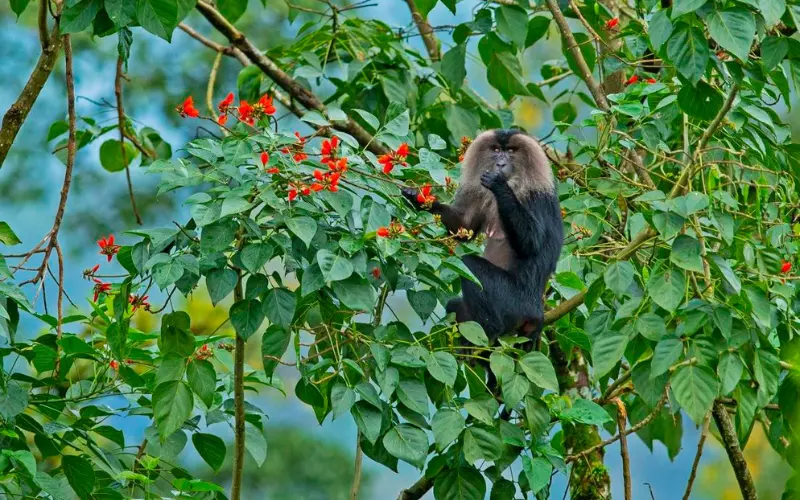
| Scientific Name | Macaca silenus |
| Length | 45-60 cm |
| Weight | 5-9 kg |
| Identifying Features | Silver-gray mane, black body, short tail |
| Where Found | Western Ghats, India |
| Conservation Status | Endangered |
The Lion-Tailed Macaque is a unique monkey found in India. Some might say it looks a bit unusual, which is why it’s sometimes called “ugly.” But it’s all about perspective! This monkey gets its name from the mane-like hair on its head.
These macaques live in the lush rainforests of India’s Western Ghats. It’s their cosy home, filled with tall trees and plenty of rain.
These monkeys have a long history, dating back millions of years. Sadly, their numbers have been decreasing due to habitat loss and hunting.
Lion-tailed macaques belong to a particular group of monkeys called Old World monkeys. They’re known for their small population and are considered endangered.
You can spot these unique macaques in the southern part of India. They’re a vital part of our world, teaching us the importance of preserving nature’s treasures.
9. Colobus Monkey

| Scientific Name | Colobus spp. |
| Length | 19-28 inches |
| Weight | 15-32 pounds |
| Identifying Features | Black and white fur, long tail, no thumbs. |
| Where Found | Africa |
| Conservation Status | Varies. Some endangered |
The Colobus Monkey is a fascinating creature found in Africa. Some might say it’s not the prettiest monkey, but it has charm!
Their black and white fur makes them look different, which looks a bit like a tuxedo. They have a big, bushy tail and no thumbs, which makes them unique.
These monkeys like to live high up in trees in places like forests and woodlands. They are good climbers, and their habitat provides plenty of leaves to munch on.
Colobus monkeys have a long history, with fossils dating back millions of years. There are different types of Colobus monkeys, each with its own special look.
You can find them in countries like Kenya, Uganda, and Tanzania, in the eastern part of Africa. These monkeys may not be the prettiest, but they sure are fascinating!
10. Golden Snub-Nosed Monkey

| Scientific Name | Rhinopithecus roxellana |
| Length | 55-75 cm (22-30 in) |
| Weight | 10-20 kg (22-44 lbs) |
| Features | Golden fur, upturned nose |
| Found | Central and southwest China |
| Status | Endangered (habitat loss, poaching) |
Snub-Nosed Monkey! Some people might find them a bit “ugly” because they have flat faces and short, upturned noses. But don’t be fooled; they have their charm!
These monkeys live high up in the mountains of Asia, like China and Tibet. They love cold places with many trees, so they’re often found in snow-covered forests.
These monkeys have lived in these areas for thousands of years. They’re known for their social groups and their playful behaviour.
There are different kinds of Snub-Nosed Monkeys, each with special features, like the Golden Snub-Nosed Monkey. So, if you’re ever in Asia, watch for these fascinating creatures in the chilly mountains!
Let’s Know More About Monkeys
The History of Monkey
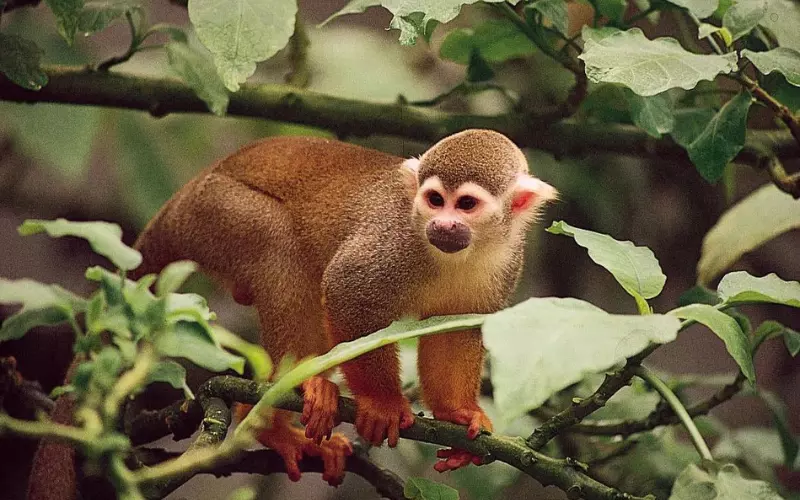
The history of monkeys is fascinating. Monkeys are clever animals that have been around for a long time. They are part of a big family called primates, including humans.
Monkeys first appeared on Earth around 40 million years ago. They evolved from smaller, tree-dwelling creatures. Over time, they adapted to different environments and developed various species. Some monkeys live in trees, like the spider monkey, while others prefer the ground, like baboons.
Monkeys can be found in many parts of the world, from Africa to Asia and even the Americas. They come in different shapes and sizes, with long or short tails and some with colourful faces.
These creatures are known for their playful nature and ability to use tools. Some even have complex social lives, living in groups called troops. Monkeys have played a role in the culture and stories of many societies worldwide. Monkeys have a long history on Earth and are a fascinating part of our natural world.
What are the Physical Characteristics of Monkeys?
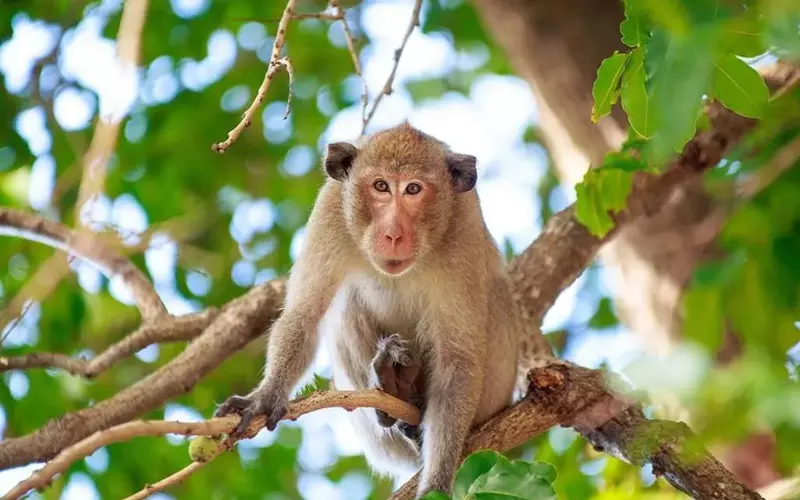
Monkeys are animals that look like humans but have some differences. They have fur all over their bodies, which can be brown, black, or other colours. Monkeys usually have a long tail that they use to balance and swing in trees. They also have two arms and two legs, just like us.
Their faces have eyes, a nose, and a mouth, but they often have bigger ears than humans. Monkeys can make funny expressions with their faces, like smiling or frowning.
Monkeys come in different sizes, from small ones that can fit in your hand to big ones as tall as a grown-up. They use their hands to grab things and can climb trees well. Monkeys are very good at swinging from branches and jumping around. They are curious and playful animals, often seen in the wild or in zoos.
How do Monkeys Behave?

Monkeys are interesting animals that live in forests and jungles. They like swinging from trees using their long arms and tails, just like we play on the playground. Monkeys are very social, which means they like to be with other monkeys. They often live in groups called troops.
Monkeys are curious and love to explore. They use their hands and sometimes even their feet to pick up things. They eat fruits, leaves, insects, and sometimes small animals. Monkeys can be playful and make funny sounds like chattering or screaming.
Some monkeys, like chimpanzees, are intelligent and can even use tools to get food. But remember, monkeys are wild animals, so it’s important to watch them from a safe distance and not disturb them in their homes.
Why are Monkeys Important to Humans?
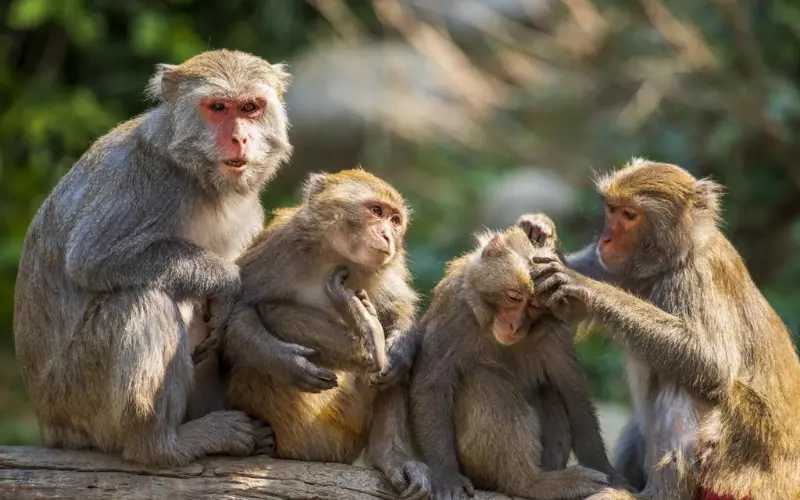
Monkeys are essential to humans for several reasons:
- Scientific Research: Monkeys are used in scientific research to study diseases and learn more about how our bodies work. This helps scientists develop medicines and treatments for humans.
- Ecological Balance: Monkeys play a role in maintaining the balance of their ecosystems. They help disperse seeds when they eat fruits, which helps plants grow. This, in turn, benefits other animals and the environment.
- Tourism and Education: Many enjoy watching and learning about monkeys in zoos and wildlife reserves. This can be both fun and educational, helping people connect with nature.
- Cultural and Spiritual Significance: In some cultures, monkeys hold special significance in stories, art, and religious beliefs. They are seen as symbols of wisdom, mischief, or other qualities.
- Biodiversity: Monkeys are a part of Earth’s biodiversity, and protecting them helps maintain the variety of life on our planet, which is vital for the health of our ecosystems.
Monkeys are fascinating creatures and contribute to scientific knowledge, ecological health, and cultural richness, making them essential to humans in many ways.
What are the Threats to Monkeys?
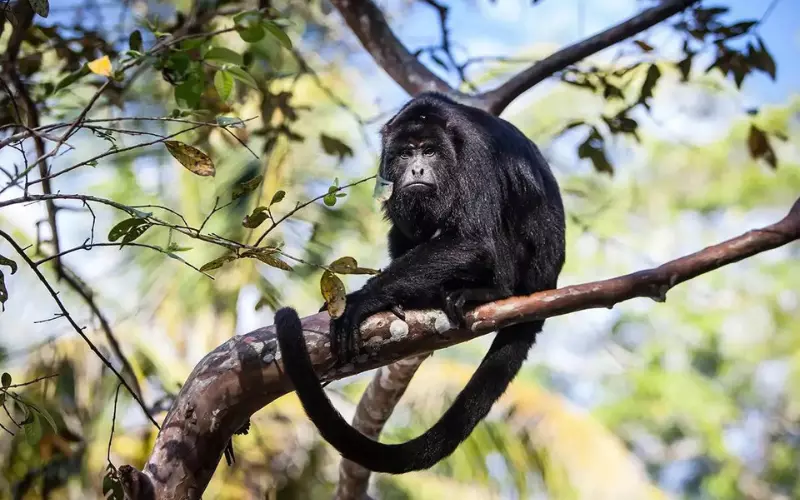
Sure, here are some threats to monkeys explained in simple language:
- Habitat Loss: When people cut down trees or build cities in the forests where monkeys live, the monkeys lose their homes.
- Hunting: Some people hunt monkeys for their meat, fur, or as pets. This can make monkey populations go down.
- Diseases: Just like people, monkeys can get sick. Sometimes, they can catch diseases from humans, which can be very dangerous.
- Climate Change: The weather is changing, and it can make it hard for monkeys to find food and water because their habitats are changing, too.
- Pollution: Pollution can dirty the air and water, hurting the monkeys and the plants they eat.
- Predators: Some animals, like big cats and eagles, like to eat monkeys. When there are too many predators, it can be tough for monkeys to survive.
- Not Enough Food: When people cut down trees or remove the plants monkeys eat, they might not have enough food.
We should protect monkeys and their homes so they can live safe and happy lives.
Contribution of Monkeys to Our Environment
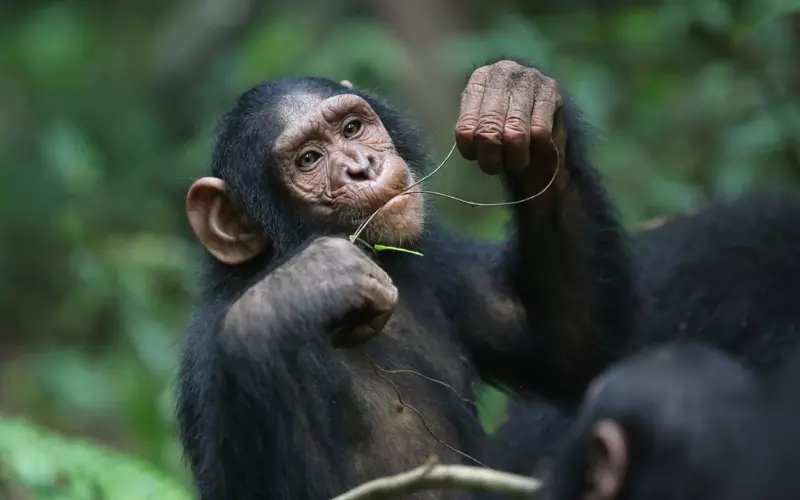
Monkeys, those clever creatures swinging through the trees, help our environment in important ways. First, when monkeys munch on fruits, they spread seeds around. It’s like they’re planting tiny tree babies! This helps forests grow because new plants sprout where the seeds land.
Second, monkeys keep insect populations in check. They eat bugs, which can be pests that bother other animals and plants. Monkeys help keep the balance in their homes by gobbling up these critters.
Third, they’re like forest doctors. When they eat leaves and fruits, they can help spread seeds of medicinal plants. These plants can help treat illnesses in humans and other animals.
So, monkeys are like nature’s gardeners and doctors. They ensure the forest stays healthy and green while helping us with essential medicines. We should do our best to protect them and their homes so our environment stays in good shape.
Conclusion
Even though some might call them the “ugliest monkeys in the world,” all monkeys are special and vital in their way. They might not have colourful fur or fancy looks, but unique features help them survive in their homes. Remember, what matters most about monkeys isn’t how they look on the outside but how they fit into nature’s puzzle.
Like every person is unique and valuable, every monkey has a role in keeping our planet’s balance. So, whether they’re cute or not-so-cute, let’s appreciate and protect all monkeys because they are a vital part of the beautiful tapestry of life on Earth.
FAQ’s
Q: What is the weirdest monkey?
A: The proboscis monkey with its big nose is often considered one of the weirdest monkeys.
Q: What is the most beautiful monkey in the world?
A: Many find the mandrill monkey with its colourful face strikingly beautiful.
Q: What is the name of a monkey with a big nose?
A: The monkey with a big nose is called a Proboscis monkey.
Q: What is the animal that looks like a monkey?
A: Lemurs from Madagascar look similar to monkeys but belong to a different group of primates.
Q: Can we pet monkeys in India?
A: No, it’s illegal to pet monkeys in India due to wildlife protection laws.
Q: What is the smallest monkey?
A: The pygmy marmoset is the world’s smallest monkey.
Q: What is Lion Monkey called?
A: Lion-tailed macaque is sometimes called the “Lion monkey.”
Q: What is a monkey pig?
A: Monkey pig isn’t a real animal; it might refer to something else.
Q: What monkey has four stomachs?
A: Monkeys, like most mammals, have one stomach.
Q: What is a female monkey called?
A: A female monkey is called a “female” or a “she-monkey.”
Q: What is an avatar monkey?
A: There’s no specific “avatar monkey.” It might refer to a fictional creature.
Q: What is a monkey like a lion?
A: The lion-tailed macaque has a mane-like mane and is sometimes called the “Lion monkey.”
Q: What animal has five fingers?
A: Humans and some primates, like monkeys, have five fingers on each hand.
Q: What animal has 13 stomachs?
A: No animal has 13 stomachs; this might be a myth.
Q: What animal has 800 stomachs?
A: No animal has 800 stomachs; this seems an exaggeration.
Q: Do monkeys have two nipples?
A: Female monkeys usually have two nipples.
Q: What is a dragon Avatar?
A: In “Avatar: The Last Airbender,” a dragon is a wise, ancient creature.
Q: Is Avatar animals real?
A: No, the animals in “Avatar” are fictional creations.

Hi there, I’m Emily Buono, and I’m thrilled to introduce myself! Currently, I’m part of two fantastic places: I work as a VisEx at the New England Aquarium and as an RAS at MGH CCM.
I completed my education at the Mass General Research Institute and Stonehill College, which is located in Valatie Colony, New York, in the United States.
Now, here’s the exciting part: I absolutely adore animals! They captivate me, and I’m always eager to learn more about them. In fact, I write articles all about these incredible creatures.
In the past, I’ve worn many hats, such as being a biologist at the Maria Mitchell Association, a cashier, a floor organizer, and a visitor experience and research animal specialist.
My passion lies in exploring the world of animals and helping others understand them better. So, if you ever have questions about animals, feel free to reach out. I’m here to make animal info easy and fun to grasp!












